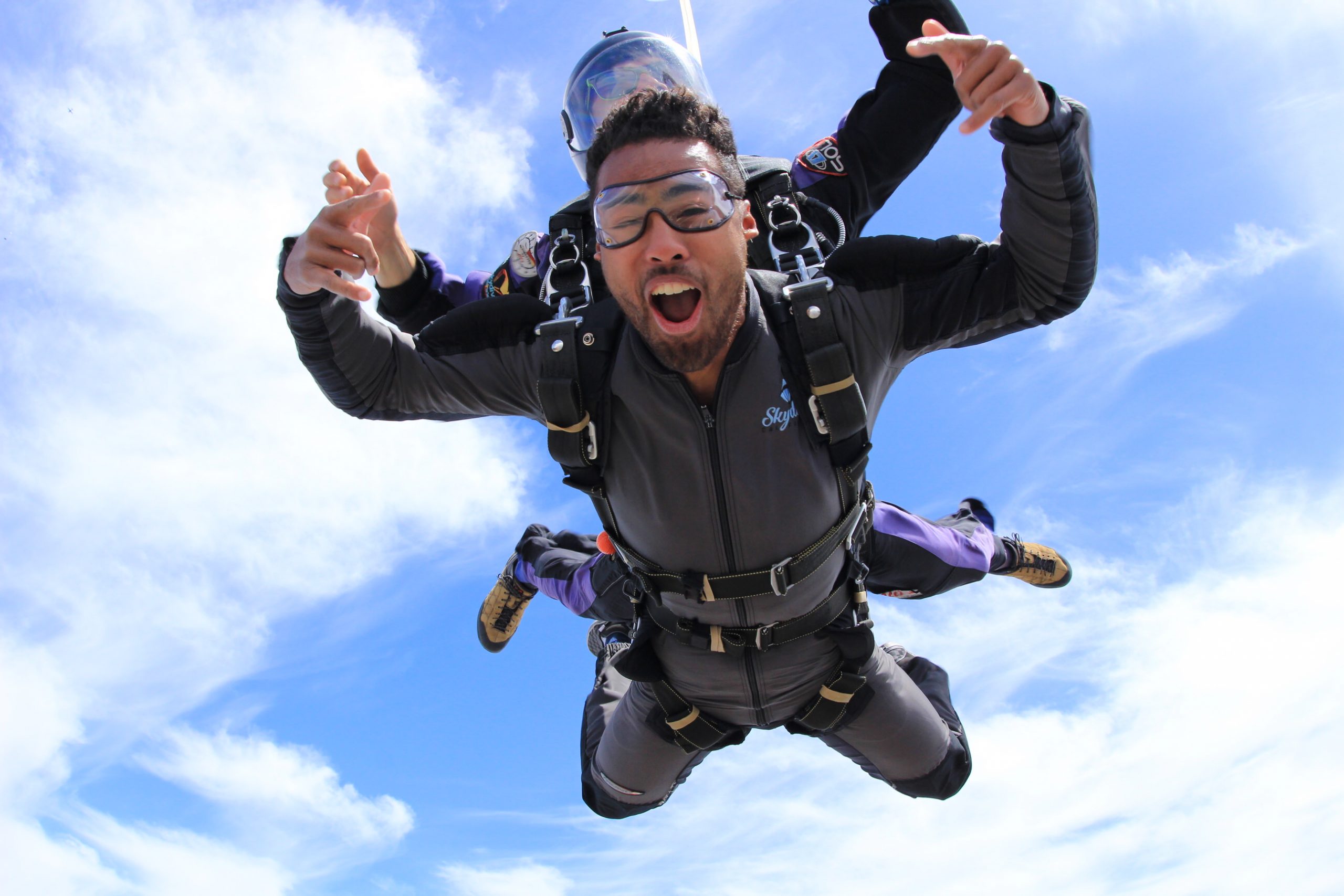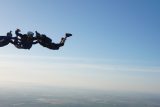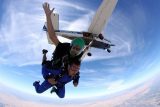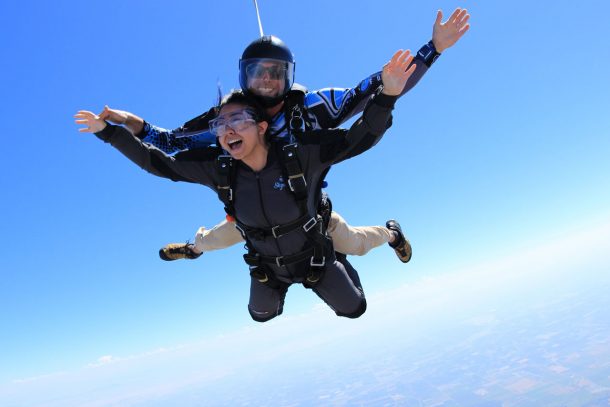A Beginner’s Guide to Skydiving Positions
If you’ve been watching skydiving videos on the internet for a while, you may be super-intrigued by the large range of skydiving techniques those videos demonstrate — first and foremost, the plethora of skydiving positions these high-flying athletes use to navigate the skies. As it’ll be quite a while before you’ve spent enough time in the sky (or the indoor skydiving wind tunnel) to master most of these contortions, let’s start by addressing the foundation of these skydiving positions: the venerable arch.
Skydiving Positions 101: Body Awareness
Each person making a skydive has a vital role to play in the safety of the skydive, whether you’re sharing a parachute or you have your own. When you learn to skydive, whether you’re going for your very first tandem skydive or literally leaping into your solo skydiving training progression, you’ll engage with the three major pieces of the training: exiting the aircraft, arching in freefall and managing your legs on landing. The first two — exiting the aircraft stable and maintaining that stability in freefall — center on the art of the arch.
It will quickly become evident that body awareness is the seat of safety when you’re skydiving, and most of that body awareness centers on that all-important arch. That’s why you can expect your instructor will make a considerable effort to work with you on yours.

Skydiving Positions 102: Training the Arch
Creating a “banana” shape with the body — so that the air in freefall smoothly moves over a more-or-less stable, curved surface — is what creates the foundation of stability in the belly-to-earth position that you learn first when you learn to skydive. Tandem pairs make this shape, as do solo skydiving students and practitioners of the Relative Work discipline.
When instability in freefall rears its ugly head, it’s returning to a good, even arch that most reliably solves the problem.

Skydiving Positions 103: Training the Other Skydiving Positions
As you well know by now, skydiving is certainly not about simply falling belly-to-earth. Once a solo skydiver has nailed a great arch position, that skydiving position readily serves as the foundation to develop all the others. From head-down flying to zippy angle flying to sit-flying to stand-flying to wingsuiting and flips, the body- and airflow-awareness that we learn when we’re training that arch position informs absolutely everything else we do.
Also: No matter what configuration we’re flying in, everyone is taught to make this shape when we get ready to deploy our parachutes. Because it’s the most stable position and moves at one of the slowest and most controllable speeds, a gentle arch is by far the safest and most comfortable position from which to deploy a parachute.
So, dear reader: Are you ready to show us your very best banana impression? We’re hungry to see it! Come down to Skydive California near the Bay Area and demonstrate your most a-peel-ing freefall stability. Let’s monkey around!







